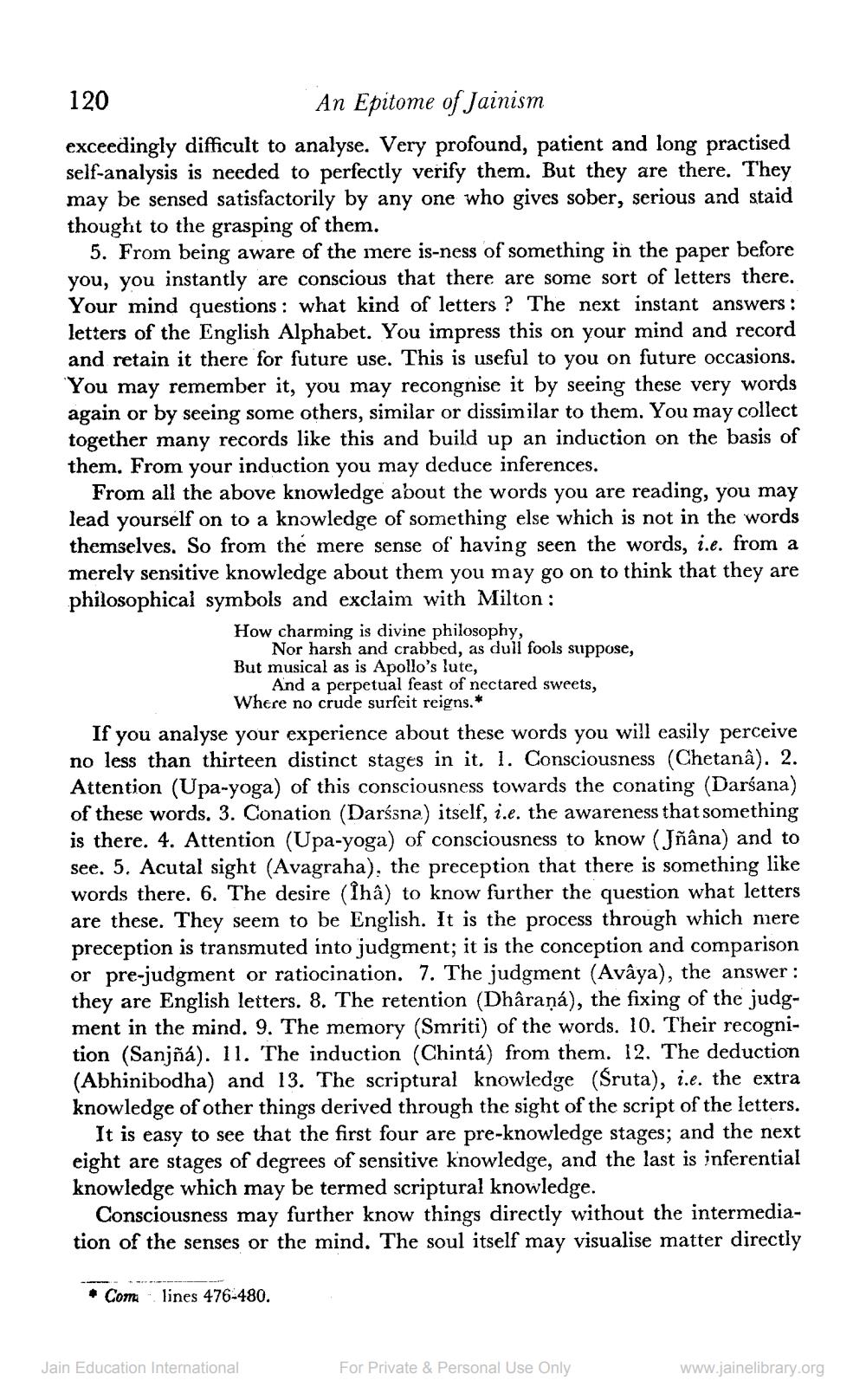________________
120
An Epitome of Jainism
exceedingly difficult to analyse. Very profound, patient and long practised self-analysis is needed to perfectly verify them. But they are there. They may be sensed satisfactorily by any one who gives sober, serious and staid thought to the grasping of them.
5. From being aware of the mere is-ness of something in the paper before you, you instantly are conscious that there are some sort of letters there. Your mind questions: what kind of letters? The next instant answers: letters of the English Alphabet. You impress this on your mind and record and retain it there for future use. This is useful to you on future occasions. You may remember it, you may recongnise it by seeing these very words again or by seeing some others, similar or dissimilar to them. You may collect together many records like this and build up an induction on the basis of them. From your induction you may deduce inferences.
From all the above knowledge about the words you are reading, you may lead yourself on to a knowledge of something else which is not in the words themselves. So from the mere sense of having seen the words, i.e. from a merely sensitive knowledge about them you may go on to think that they are philosophical symbols and exclaim with Milton:
How charming is divine philosophy,
Nor harsh and crabbed, as dull fools suppose, But musical as is Apollo's lute,
And a perpetual feast of nectared sweets,
• Com
Where no crude surfeit reigns.*
If you analyse your experience about these words you will easily perceive no less than thirteen distinct stages in it. 1. Consciousness (Chetanâ). 2. Attention (Upa-yoga) of this consciousness towards the conating (Darśana) of these words. 3. Conation (Darssna) itself, i.e. the awareness that something is there. 4. Attention (Upa-yoga) of consciousness to know (Jñâna) and to see. 5. Acutal sight (Avagraha), the preception that there is something like words there. 6. The desire (Îhâ) to know further the question what letters are these. They seem to be English. It is the process through which mere preception is transmuted into judgment; it is the conception and comparison or pre-judgment or ratiocination. 7. The judgment (Avâya), the answer: they are English letters. 8. The retention (Dhâraná), the fixing of the judgment in the mind. 9. The memory (Smriti) of the words. 10. Their recognition (Sanjñá). 11. The induction (Chintá) from them. 12. The deduction (Abhinibodha) and 13. The scriptural knowledge (Śruta), i.e. the extra knowledge of other things derived through the sight of the script of the letters.
It is easy to see that the first four are pre-knowledge stages; and the next eight are stages of degrees of sensitive knowledge, and the last is inferential knowledge which may be termed scriptural knowledge.
Consciousness may further know things directly without the intermediation of the senses or the mind. The soul itself may visualise matter directly
lines 476-480.
Jain Education International
For Private & Personal Use Only
www.jainelibrary.org




